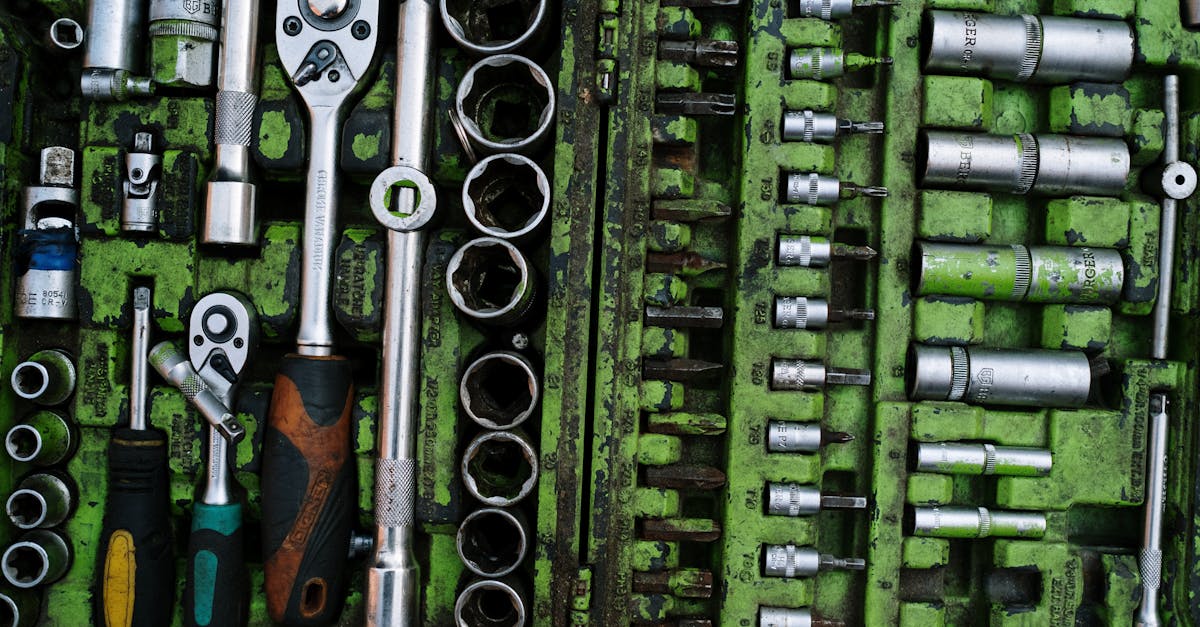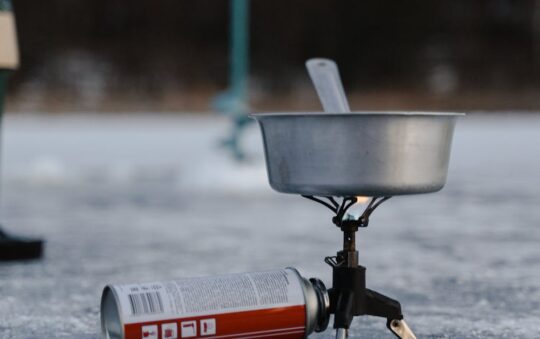Ever been miles from home when your bike suddenly gives out? That sinking feeling hits hard, but having a compact bike repair kit changes everything. I’ve learned that packing a small, efficient kit isn’t just smart—it’s a game-changer for any ride.
These little kits fit snugly in your bag or pocket yet hold the power to fix flats, tighten bolts, and keep you rolling. In this text, I’ll share what makes a repair kit truly compact and why it’s an essential companion for every cyclist who values freedom and peace of mind on the road.
Features of Compact Bike Repair Kits
When you’re out for a ride, the last thing you want is to be stranded because of a flat or a loose bolt. That’s where a compact bike repair kit shines—small enough to carry everywhere yet packed with tools that get the job done. Here’s what I look for in a go-to kit.
Tools Included
In my experience, a solid compact bike repair kit needs a few key tools without the bulk:
- Tire levers: These help pry the tire off the rim—a must-have for fixing flats.
- Multi-tool: Usually includes a set of Allen wrenches, screwdrivers, and sometimes a chain breaker. These handle most adjustments on the go.
- Patch kit: Glue and patches to repair punctured tubes when replacement isn’t an option.
- Mini pump or CO2 inflator: Air is essential after fixing a flat. While pumps take a bit longer, CO2 inflators are super quick.
- Spare tube holder: Some kits include a small bag or strap to secure your spare tube.
Each piece serves a clear purpose. It’s like packing a Swiss Army knife for your bike—just the essentials without the extra weight.
Size and Portability
What good is a kit if it feels like carrying a second bike? That’s why the compact factor matters. I usually grab kits that:
- Fit easily into a jersey pocket or attach to the frame.
- Weigh less than a pound, often closer to a few ounces.
- Have organized compartments—no fumbling around for that tiny screw or patch.
One time I had a bulky kit that wouldn’t fit in my saddlebag. I ended up leaving it home, which, trust me, isn’t smart. Going compact means you’re more likely to carry it everywhere—making fixes easier and stress less.
Material Quality
I’ve learned the hard way that low-quality tools can be more trouble than help. A deal isn’t a deal if your wrench slips or your tire lever snaps. Here’s what I keep an eye on:
- Durability: Aluminum-alloy tools often balance weight and toughness well.
- Rust resistance: Steel parts with a protective coating prevent corrosion—especially important if you ride in wet conditions.
- Grip: Tools with ergonomic or textured handles make repairs less slippery and more comfortable.
A quality kit might cost a little more upfront but saves you a headache on the trail and keeps things running longer. One riding buddy uses a kit with plastic levers that broke after two rides. I swapped his levers, and he hasn’t complained since.
Quick Tips for Choosing a Compact Kit:
- Prioritize essential tools based on your bike type (road, mountain, hybrid).
- Check if the kit includes tools for your bike’s unique parts (like thru-axles or disc brakes).
- Balance weight against what you could realistically need on your typical ride.
Every rider’s needs vary, but a well-rounded compact kit turns unexpected fixes from frustrating into manageable.
Performance and User Experience
When it comes to compact bike repair kits, how they perform on the road and how easy they are to use really matters. I’ve found that a good repair kit can turn a roadside headache into a quick fix — freeing me to enjoy the ride instead of worrying about the tools.
Ease of Use
One of the first things I look for is how straightforward the kit is to handle, especially when the clock is ticking and my hands aren’t exactly steady from sweating or cold. Compact kits should feel like an extension of your own hands — simple grips, clear tool layout, and no fiddly bits that require a lot of force or complicated handling.
The best kits often have multi-tools where each component clicks or folds smoothly into place. For instance, tire levers that aren’t so stiff they risk snapping while trying to pry off a tire. I’ve had kits where the patch glue dried up long before I needed it (ouch!), so freshness and ease here counts. On top of that, having a mini pump or CO2 inflator that feels user-friendly makes a huge difference. Nothing worse than struggling with a pump mid-ride when your tire is begging for air.
Here’s a quick tip that helped me: pick a kit that fits neatly into a jersey pocket or mounts onto your frame without fuss. That way, it’s always there when you need it and not just extra weight you wish you’d left at home.
Effectiveness in Repairs
I’m all about results when using a repair kit. It’s not just that you have tools but whether those tools actually get the job done. A good compact repair kit covers the basics really well — fixing flats, tightening bolts that loosen up over bumpy miles, or even truing a wheel just enough to keep rolling home safely.
For example, I remember using a compact kit on a lengthy ride where I got a puncture far from any service station. The patch kit worked great, sealing my tire within minutes so I could finish the ride without panic. A reliable patch kit includes both patches and a strong adhesive with a handy piece of sandpaper to roughen the tire surface before sticking — details that make a surprising difference in effectiveness.
Along with patches, the multi-tool should offer a good range of allen keys and screwdrivers that fit your bike’s hardware snugly. Sloppy tools can strip bolts, making the repair worse (and more frustrating). A solid mini pump or CO2 setup should inflate your tire to a good pressure quickly but not pop or leak air unexpectedly.
Durability During Repairs
I’ll admit, a tool that feels flimsy or breaks during a roadside fix is the worst kind of disappointment. That’s why durability is a top priority. Even though compact kits are small and lightweight, the tools should still be made from materials you can trust — usually some form of hardened steel or aluminum alloy that won’t bend or rust easily.
During a ride, I’ve had to tighten bolts on my bike’s derailleur with a compact multi-tool. The tools didn’t wobble or twist under pressure. That kind of steadiness matters when you’re trying to balance your bike up on one leg or find a bit of shade to fix your chain.
And since most riders don’t carry their bikes on soft surfaces, these tools often face dirt and occasional moisture. I keep my kit in a small pouch that protects the tools but also lets me reach in with dirty hands without hassle. Kits with corrosion-resistant finishes or coatings usually last much longer — because honestly, how often do you want to replace your repair kit? (If yours has a rusty screwdriver, you’re not alone.)
On top of that, having tools with good grips (rubberized or textured) can keep your hands from slipping — which is handy when you’re sweating or the sky just opened up.
Fast Action Takeaways:
- Choose kits with easy-to-grip tools and smooth folding or clicking multi-tools.
- Look for patch kits with fresh adhesive and included sandpaper for best results.
- Prioritize solid steel or aluminum construction to avoid tool bending or rust.
- Make sure pumps or CO2 inflators feel secure and inflate quickly without leaks.
- Keep your kit compact enough for your ride style but accessible when needed.
A solid compact bike repair kit feels less like a chore and more like a trusty backup buddy that keeps the ride rolling smoothly — even when everything else isn’t going quite right.
Pros of Compact Bike Repair Kits
When I set out on a ride knowing I have a compact bike repair kit tucked away, it feels like carrying a tiny superhero with me. These kits pack a punch without stealing precious space or weighing me down.
Fits Easily Without Bulk
One of the biggest wins for me is how these kits slip into pockets or clip onto my bike frame with ease. No more awkwardly stuffed backpacks or jangly toolboxes. Having everything in a sleek little package means I barely notice it’s there until I need it.
Essential Tools, Right at Hand
These kits typically include just what you need — tire levers, a mini pump or CO2 inflator, patch supplies, a multi-tool for bolts and adjustments, and sometimes a spare tube. Keeping the toolkit lean means I’m ready for most hiccups without lugging around extras that rarely get used.
Saves Time and Stress on the Road
I can’t tell you how many times I’ve dodged a long walk home thanks to these kits. A flat tire or loose bolt turns from a ride-ender into a quick pit stop. It’s reassuring knowing I have the tools to fix common issues swiftly. (And trust me, a quick repair beats calling for roadside help any day.)
Durable and Reliable Gear
Good compact kits are made from solid materials like aluminum or hardened steel. This means the tools handle regular use without bending or breaking. Plus, grip-friendly designs help when hands are greasy or cold — because let’s face it, roadside repairs aren’t always glamorous.
Lightweight Without Sacrificing Function
I once tried a bulky toolset and hated how it felt three miles into the ride. Compact kits weigh less than a pound (often much less), so they won’t throw off your balance or slow you down. That lightweight freedom means you can carry your essentials and still feel like you’re racing the wind.
Easy for Beginners and Seasoned Riders Alike
Even if you’re not a bike mechanic (like me, for years), these kits keep things straightforward. The tools and patch materials are simple to use, often with clear instructions. It’s like having a bike-savvy friend ready to guide you if things get sticky.
Quick Reference: Why I Trust Compact Repair Kits
| Benefit | Why It Matters | Example/Tip |
|---|---|---|
| Compact Size | Easy to carry anywhere | Fits in jersey pocket, no extra bulk |
| Essential Tools Included | Ready for most common repairs | Multi-tool, tire levers, pump/CO2 inflator |
| Durable Build | Tools last through many rides | Aluminum alloy tools resist bending |
| Lightweight | Keeps ride fluid and comfortable | Under 1 lb so no noticeable weight addition |
| Beginner Friendly | Easy to use with minimal bike knowledge | Clear instructions, intuitive tool designs |
| Saves Time | Turns potential flats into quick roadside fixes | Cuts downtime, lets you get back on trail |
Having a compact bike repair kit feels like carrying just the right amount of backup—no heavy baggage, no missing pieces, just practical peace of mind. And if you ask me, that’s the best kind of companion for any ride.
Cons of Compact Bike Repair Kits
Even though compact bike repair kits come with a lot of perks, I’ve noticed a few hiccups that can catch you off guard. You know how it goes—something that fits just right might also mean a couple of trade-offs.
Limited Tool Selection
To keep things small and light, these kits often come with fewer tools. That means you get what you need for most flats or minor fixes but might miss out on specialized tools for less common problems. For example, if your bike needs a spoke wrench or a chain breaker, some compact kits don’t include them to save space. It’s like packing for a weekend trip—you just can’t bring everything.
Durability Concerns with Miniature Tools
Some of the tiny tools are made from thinner metal or lighter materials to keep the weight down. While they handle small jobs well, they might feel flimsy or even bend when you apply too much force. I once had a mini wrench twist on me mid-ride (not fun), which meant I had to get creative until I got home.
Patch Kits Can Be Tricky
Patch kits are a staple in compact repair sets but using them takes a bit of patience—especially with older patches or if the glue isn’t fresh. And let’s face it, fumbling with tiny patches on the side of the road can test anyone’s cool. Plus, those patches might not stick well in colder or wet weather.
Limited Pump or Inflator Options
Many compact kits come with miniature pumps or CO2 inflators to save space. But the downside? Mini pumps can take ages to get a tire inflated to the right pressure. CO2 inflators are faster but require cartridges you have to replace, which adds to ongoing costs and another thing to remember to carry.
Not Always a One-Kit Solution
While these kits cover common mishaps, they’re often best seen as “just in case” backups rather than full-service toolkits. You might still need a more comprehensive set at home or on longer rides. I always carry mine knowing there might be moments it won’t have exactly what I need.
Quick Picks to Keep in Mind:
- Check if the kit includes tools that match your bike’s needs (like a chain breaker if you’re on long rides).
- Inspect mini tool build quality and don’t expect them to replace your workshop-grade gear.
- Practice using patches at home to avoid roadside frustration.
- Consider your pump’s speed and ease of use—especially if you’re often on the clock.
- Treat compact kits as a backup, not a complete fix-all set.
Still, knowing these little limitations upfront helped me appreciate what the kit does well—and to plan ahead for those “just in case” moments.
Comparison with Other Bike Repair Kits
Choosing the right bike repair kit can feel like picking the perfect snack at a vending machine—there are plenty of options but you want something that fits your needs without weighing you down. Compact bike repair kits stand out for their practicality on rides where space and weight matter most. Still, it’s worth seeing how they stack up against other popular options.
Traditional Bike Repair Kits
Traditional bike repair kits tend to be larger and offer a wider variety of tools. Think of these as the “full kitchen” compared to the “snack-size” compact kit. They usually come with comprehensive tool selections, including specialized wrenches, chain breakers, tire levers, patch kits, and pumps.
What I appreciate about traditional kits is their versatility. When you hit a unique mechanical snag—like a chain problem or a stubborn bolt—you’re more likely to have exactly the right tool. But here’s the tradeoff: these kits are often bulky and can weigh several pounds. For casual or commuter cyclists, lugging around a heavy kit feels like carrying extra baggage on a light jog.
Still, if you’re a weekend warrior or bike tourer where you can stash your kit in a bag or pannier, the extra tools might be worth the size. According to a survey by BikeRadar, over 60% of touring cyclists prefer larger repair kits to avoid getting stranded on longer routes.
Quick takeaway:
- Great for comprehensive fixes and serious cyclists
- Less suitable for short rides or minimal packing
- Useful when you have storage space or a support vehicle nearby
Multi-Tool Kits
Multi-tool kits focus on versatility in a tiny package. They’re like the Swiss Army knives of cycling—compact, lightweight, and handy for common repairs on the go.
I’ve found these multi-tool kits lifesavers on quick rides where stopping to fumble for a specific wrench would turn a five-minute fix into a half-hour ordeal. Most include Allen keys, screwdrivers, sometimes even a chain tool, all folded neatly into one gadget.
But (there’s always a but), these tools have small handles and can be trickier to use if your hands are sweaty or cold—imagine trying to twist a tiny wrench with gloves on. Also, because they’re multipurpose, they rarely outperform dedicated single-use tools in ease or speed.
Many people I know pair a multi-tool with a patch kit and a mini-pump or CO2 inflater to keep things light while having the basics covered without overpacking.
Quick takeaway:
- Ultra-portable with all-in-one convenience
- Best for routine roadside fixes and emergencies
- May sacrifice some ease of use for compactness
If you’re like me, picking between these options comes down to daily riding habits and how much room you have to carry gear. Compact kits serve as great backups or essentials for quick trips, while traditional kits earn their keep on longer adventures. Multi-tool kits, meanwhile, strike a neat balance but might test your patience in tricky repairs.
Here’s a quick table to sum it up:
| Kit Type | Weight & Size | Tool Variety | Ease of Use | Best For |
|---|---|---|---|---|
| Compact Repair Kits | Light, pocket-sized | Essentials only | Very user-friendly | Short rides, commuters |
| Traditional Kits | Heavier, bulkier | Wide, includes specialty | Easy with space, tougher on the go | Long rides, touring |
| Multi-Tool Kits | Ultra-light, small | Multi-purpose tools | Can be fiddly | Quick roadside fixes, backups |
No matter which kit you choose, the key is being ready—preferably with something that feels natural for your type of cycling. That way you keep your ride fun and stress-free, not a tool-slinging saga.
Testing and Hands-on Experience
Testing compact bike repair kits in real-world conditions gave me a clear picture of how these little packs perform when things get messy and time is tight. Let’s talk about what I found when I actually used these kits roadside and over time.
Real-World Repair Scenarios
There’s nothing quite like a flat tire on a lonely trail or a loose bolt rattling your handlebars during a ride to test a repair kit’s worth. I’ve had my fair share of these moments and brought several compact kits along on different rides to see how they hold up.
In one case, a sudden thorn punctured my tire miles from home. With my compact kit, I quickly pulled out the tire levers, popped off the tire, and patched the tube within minutes. The patch kit included was surprisingly easy to use—stick, wait a minute for the glue to set (which felt like forever), and I was back on the road. Here’s the kicker: the tools weren’t bulky and fit right in my jersey pocket, so carrying them was zero hassle.
Another time, a screw on my seat post started loosening mid-ride. Thanks to the multi-tool included in my kit, I tightened it quickly without digging through my backpack. The tool had a solid grip, which made turning bolts less of a struggle—a big plus when your hands are sweaty and your patience is thin.
Here are some quick tips from my trail tests:
- Always check tire lever quality—stiff but not brittle is the sweet spot.
- Fresh patches stick better; check your kit’s expiry every few months.
- Multi-tools should feel comfortable in your hand; tiny, sharp edges can be a pain.
- A mini pump or CO2 inflator that inflates quickly can save you precious minutes.
Long-Term Usage
After months of carrying compact kits on rides varying from around-town errands to day-long trail adventures I noticed some clear patterns on durability and ease of use. Some kits held up like champs while others showed signs of wear that could become problematic later.
The ones with hardened steel or aluminum alloy tools stood strong. Even after rough treatment, the hex keys didn’t bend and the tire levers resisted cracks. On the flip side, cheaper plastic levers tended to show stress marks after a few uses—and that’s where emergencies become frustrating.
One thing I learned is to keep the patch kit components in a small, sealed plastic bag inside the kit to protect them from moisture. Patches or glue that get damp quickly lose their effectiveness.
Here’s a quick checklist for keeping your compact kit ready for action:
- Store in a dry place between rides to avoid rust or glue failure.
- Test tools every few months to catch worn parts before you need them.
- Replace the patch kit annually for reliable fixes.
- Swapping out mini pumps or CO2 canisters before they lose oomph keeps inflations speedy.
Carrying these kits has become second nature now. I like knowing I have a trusty little sidekick for those “just in case” moments without the weight or bulk of a full toolbox. Still, I treat them as backups rather than sole repair options for big trips—because sometimes you do need more than the essentials.
If you want a simple set that fits snugly in your pocket and gets the job done when life throws a curveball, a compact bike repair kit can be your quiet hero on two wheels.
Conclusion
Having a compact bike repair kit has made a huge difference in how I approach every ride. It’s reassuring to know I can handle common issues quickly without lugging around heavy gear. The right kit fits seamlessly into my routine, giving me confidence and freedom on the road.
While no kit covers every possible problem, a well-chosen compact set covers the essentials and keeps things simple. For anyone who values convenience and peace of mind, investing in a reliable compact repair kit is a smart move that pays off every time you hit the trail or pavement.
Frequently Asked Questions
What is a compact bike repair kit?
A compact bike repair kit is a small, lightweight set of essential tools designed to fix common bike issues like flat tires or loose bolts while on the go. It usually fits in a jersey pocket or mounts to the bike frame for easy carrying.
Why should I carry a compact bike repair kit?
Carrying a compact kit ensures you’re prepared for unexpected breakdowns during rides. It offers peace of mind by allowing quick fixes, helping you continue your ride without extra stress or waiting for help.
What tools are included in a compact bike repair kit?
Typically, it includes tire levers, a multi-tool, a patch kit, a mini pump or CO2 inflator, and a spare tube holder. Each tool is chosen for portability and effectiveness in common roadside repairs.
How do I choose the right compact bike repair kit?
Pick one that balances essential tools, durability, and weight. Consider your bike type and usual ride length. Look for rust-resistant material, good grip, and a kit that fits your storage needs.
Can a compact bike repair kit handle all bike repairs?
No, compact kits are best for basic repairs like fixing flats or tightening bolts. For more complex or specialized repairs, a larger, more comprehensive toolset is needed.
Are compact bike repair kits beginner-friendly?
Yes, they are designed to be simple and easy to use, making them ideal for beginners who want a hassle-free repair option during rides.
How should I maintain my compact bike repair kit?
Regularly check tool condition, keep patch kits dry, and ensure pumps or CO2 inflators are functional. Replace worn or damaged parts to keep the kit ready for emergencies.
How does a compact kit compare to traditional or multi-tool kits?
Compact kits prioritize portability and ease of use with essential tools, while traditional kits offer more variety but can be bulky. Multi-tools combine many functions but may be less precise or harder to handle.




